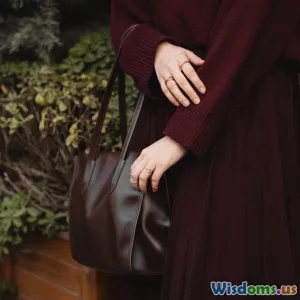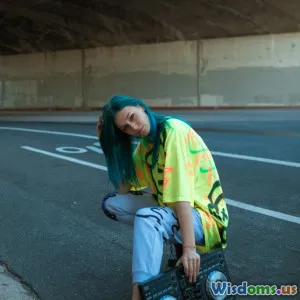Fashion Disasters in Iconic Films
8 min read Dive into memorable fashion disasters in iconic films and discover how they impacted cinema and style culture. (0 Reviews)Fashion Disasters in Iconic Films: When Style Misses the Mark
Fashion and film have long shared a symbiotic relationship where costumes serve not only to dress characters but also to embody narratives and cultural trends. However, this marriage does not always yield success. Throughout cinema history, there have been several instances of wardrobe choices turning into spectacular fashion disasters — some due to misjudgment, others by charm or accident — leaving lasting impressions on audiences and critics alike. This article explores some of the most memorable fashion disasters in iconic films, understanding why they happened and the effects they rippled through fashion and film culture.
The Role of Costume in Filmmaking
Before delving into disastrous examples, it helps to understand the function of costumes in film. Costumes assist in character development, setting the tone, and storytelling. As legendary costume designers like Edith Head and Colleen Atwood have said, fashion in film shapes viewer perceptions and mood, subtle or overt.
Yet, creating a perfect outfit for the screen isn’t easy. Designers must balance historical accuracy, character traits, director vision, budget constraints, and audience appeal. With so many variables, some designs inevitably miss the mark, becoming fashion faux pas that stand out as much as the movies themselves.
Iconic Fashion Disasters Unveiled
1. Waterworld (1995) – The Drowned-In-Discount Look
Despite its ambitious post-apocalyptic vision, Waterworld suffered from a lackluster costume choice that failed to convincingly convey the gritty aquatic world. Kevin Costner’s outfit included pieces that appeared more like repurposed thrift-store garments than a convincing survivalist uniform. Critics argued the attire seemed soggy and drab, lacking creativity and realism, which undermined the world-building effort. This neglect in costuming contributed to the film’s iconic reputation for lavish failure.
2. The Last Airbender (2010) – Cultural Confusion Meets Yellowface
Beyond the broader controversies of casting, the costume department drew sharp criticism for mismatched cultural inspirations and underwhelming attire that confused audience expectations. The film's costumes borrowed arbitrarily from various Asian cultures without authenticity or respect, diluting the film's fantasy element. The poorly executed looks distracted viewers and stoked conversations on cultural sensitivity and the importance of responsible design.
3. Twilight Saga – The Glow of Questionable Glamour
While widely loved, the Twilight films resembled a nun-to-fashionista dress evolution for the heroine, Bella Swan. A notable misstep was Bella’s 1950s-style prom dress in Breaking Dawn, which some critics found ill-fitting and outdated amid otherwise modern costumes. This anomaly sparked discussions on balancing tradition & trend in cinematic wardrobe choices and how even beloved franchises can stumble visually.
4. Batman & Robin (1997) – Bat-suit Malfunction and Costume Camp
Perhaps one of the most notorious film fashion disasters, the Batman & Robin costumes piled latex and plastic layers onto actors, resulting in stiff, rubbery suits that limited mobility and caused unflattering reflections under studio lighting. The infamous addition of 'bat nipples' on costume chest plates drew ridicule globally and symbolized a broader misunderstanding of comic adaptation aesthetics. Costume designer Jose Fernandez himself acknowledged the challenges in balancing comic book exaggeration with cinematic realism.
5. Catwoman (2004) – From High Fashion to Feline Faux Pas
Halle Berry’s Catwoman suit attempted to combine sensuality with sleekness but ended up looking more like a bondage outfit than superhero attire. The glossy black vinyl material was heavily reflective, making the character’s movements awkward on screen. Costuming critics panned the outfit for being less practical and more fetishistic, failing to convey Catwoman's essence and raising questions about designing costumes that empower rather than merely titillate.
What Causes These Fashion Flaws?
Several factors contribute to these cinematic fashion fails:
- Misunderstanding the Character or Context: Designers sometimes miss the mark in interpreting the story or character’s personality, resulting in a disconnect.
- Budget Limitations: Films constrained financially may opt for cheaper-looking materials.
- Overambition or Misplaced Creativity: Trying to innovate dramatically can backfire when designs don’t suit the film’s tone.
- Cultural Insensitivity: Borrowing elements without proper respect or research can result in ugly wardrobe failures.
- Technological Limitations: Earlier films struggled with fabric and costume technologies which now allow for more breathable, versatile outfits.
How Fashion Disasters Influence the Fashion and Film Industries
Interestingly, these disasters serve as cautionary tales for designers and filmmakers. For example, the Batman & Robin debacle heralded a shift in superhero costume design, prompting more realistic, functional approaches seen in Christopher Nolan's Dark Knight trilogy.
In fashion, such movie disasters sometimes gain cult followings, influencing subcultures or inspiring ironic fashion revivals. The line between disaster and trend is often thinner than expected. Moreover, discussions sparked by costumes like those in The Last Airbender have raised awareness about cultural representation and the need for inclusivity in design.
Conclusion: Learning from Fashion Failures on Screen
Fashion disasters in iconic films underscore the vital role costumes play beyond mere aesthetics. They are integral to storytelling, audience immersion, and cultural messaging. By examining these wardrobe missteps, filmmakers and designers can glean insights into balancing creativity, practicality, cultural respect, and narrative alignment.
Ultimately, even the most dazzling cinema can't fully shine if its clothes falter. By understanding past mistakes, the symbiosis of fashion and cinema continues evolving, turning lessons from failures into the runway models of success.
References & Further Reading
- Walker, Alexander. Hollywood Costume Design: From Headpiece to Toe. Thames & Hudson, 2012.
- Interview with Jose Fernandez on costume challenges in Batman & Robin, Costume Society Journal, 1998.
- Gross, Jane. "Cultural Sensitivity in Film Wardrobe", Dressed in Reality, 2015.
- Various movie reviews and critiques published between 1995-2010.
Rate the Post
User Reviews
Popular Posts





















